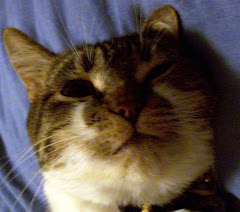I was bored, and since I have Win 7 on my computer as a virtual system, I thought it would be fun to write about improvements to one of my favorite interface options. I know that my friends won't care, but I love the handwriting recognition features in Vista. This feature is the primary reason I left Vista installed on my main computer in the first place. If it wasn't for that option I would have already wiped Vista so I could set up for the "Linux Adventure" on my good computer. Come down to it though, and I would actually miss this. I'm thinking that maybe when Win 7 is officially released, I may run XP in a virtual machine and run Ubuntu on the other main partition, or if I go completely Linux loony, maybe I will just run Windows in a virtual machine altogether, though I question whether that would actually happen. I just don't feel like I know enough Linux to actually get comfortable with that. Oh well, that is hardly the purpose of this post, so on with the show.
Since I have been playing with Win 7 a little bit I have come to see that for the most part, I really have come to like its input panel for handwriting much more than I do Vista's. It still certainly has its flaws, but it has improved vastly and I really could come to enjoy using it. It does have a particularly obnoxious. "feature" that makes it insist on trying to fit words together in the wrong ways, but it is much better at offering alternatives when its made a recognition error. It also seems to behave a bit better about actual recognition. I still couldn't write a novel on here, but it might be possible on a tabletPC where you could actively see what you are writing as you write it.
One fantastic feature that I just discovered is that it seems to remember your earlier writing or at least it is able to fix things on the fly. It will even copy small chunks of highlighted text into the writing area where you can work on it.
The gestures seem to work a lot better than they do in Vista as well. When you try to scratch something out, as long as it has already been recognized it seems to do a good job of understanding that you want to erase it. Joining and splitting text doesn't always seem to work as well for me but I think that may be a user error. As far as editing gestures go, they seem to work very well, as long as you don't have to enter correction mode. I haven't yet figured out the best way to fix errors where Windows takes two unrelated words and mashes them together in strange ways. Since gestures don't work as well when you are in that mode it is harder to separate two characters or add an extra space between characters. I hope I can figure out how to deal with that little problem.
If I personally were designing this interface there are just a few things I would change to increase usability though. First, I would like to see my original handwriting for a bit longer though as it is sometimes helpful to consider context when making corrections to recognition errors. The other option that I find to be lacking is the ability to scroll, like a word processor. When I am freewriting, I like to be able to just flow and clean up the mess later. Sometimes I just need to get my thoughts or notes written down. However, as it stands mow, I have to clean up each page on the recognition screen as it appears or I end up with a much bigger mess later that makes using recognition impractical at best and infeasible at worst.
All in all, I would love to get my hands on a proper tablet to try some of this out in a more natural environment. For me at least I find handwriting is often the most artistically freeing way to work, even if it tends to be a bit slower and more finicky than the keyboard and other more traditional methods, and I am pleased that even with an inexpensive graphics tablet and my standard monitor setup, this process works well.
(Eww, I just made an unpleasant discovery. The handwriting recognition has a bad time with Uppercase I and lowercase l. I can understand this, they look identical when written. They also look identical in several fonts, including the one they use to create the “handwritten” look as they recognize text. They don’t look the same to screen readers though, so I hope I don’t have a bunch of “l will’s” floating around this entry. Let me know, and I am sorry if I do.)
Subscribe to:
Post Comments (Atom)

No comments:
Post a Comment